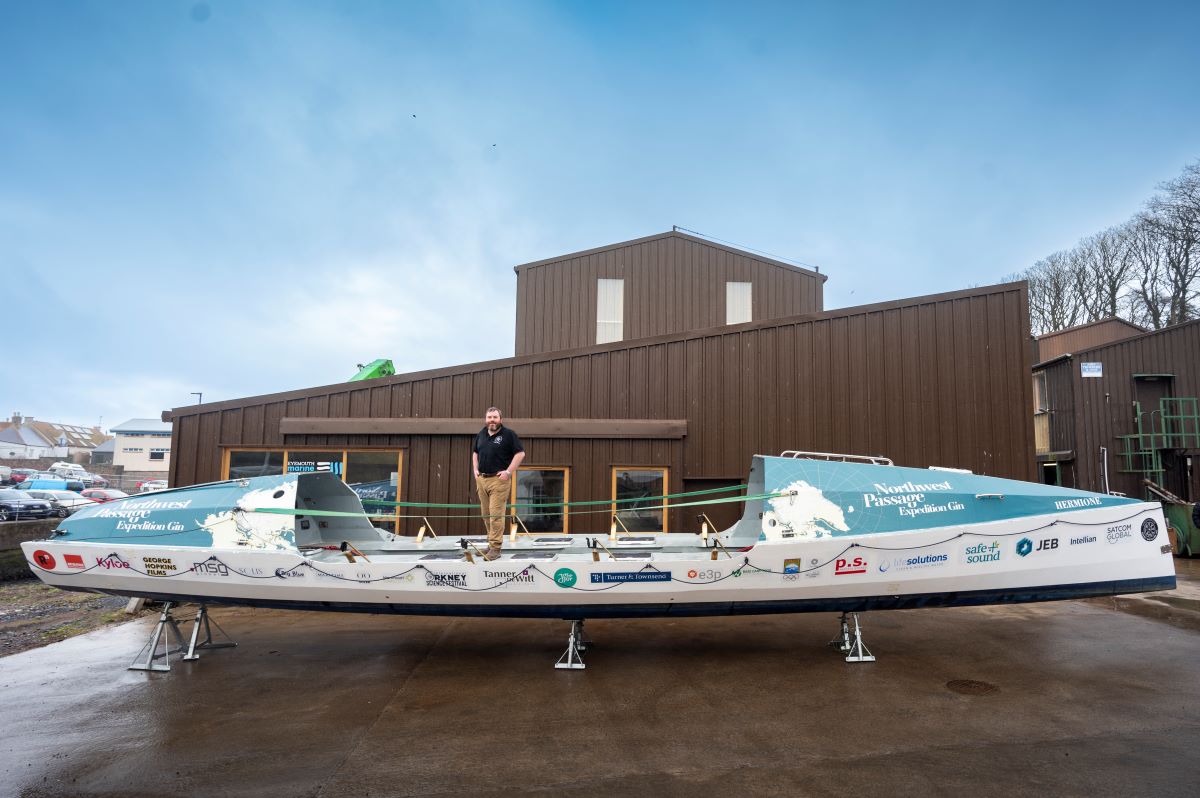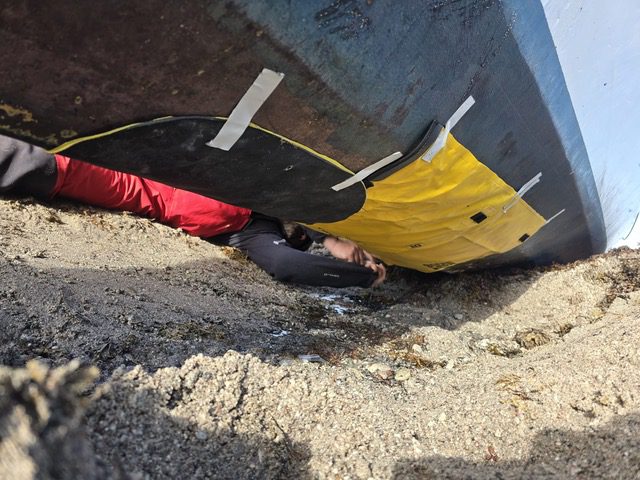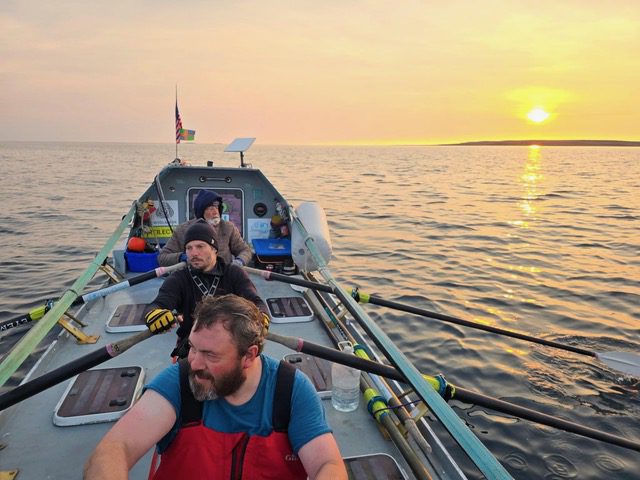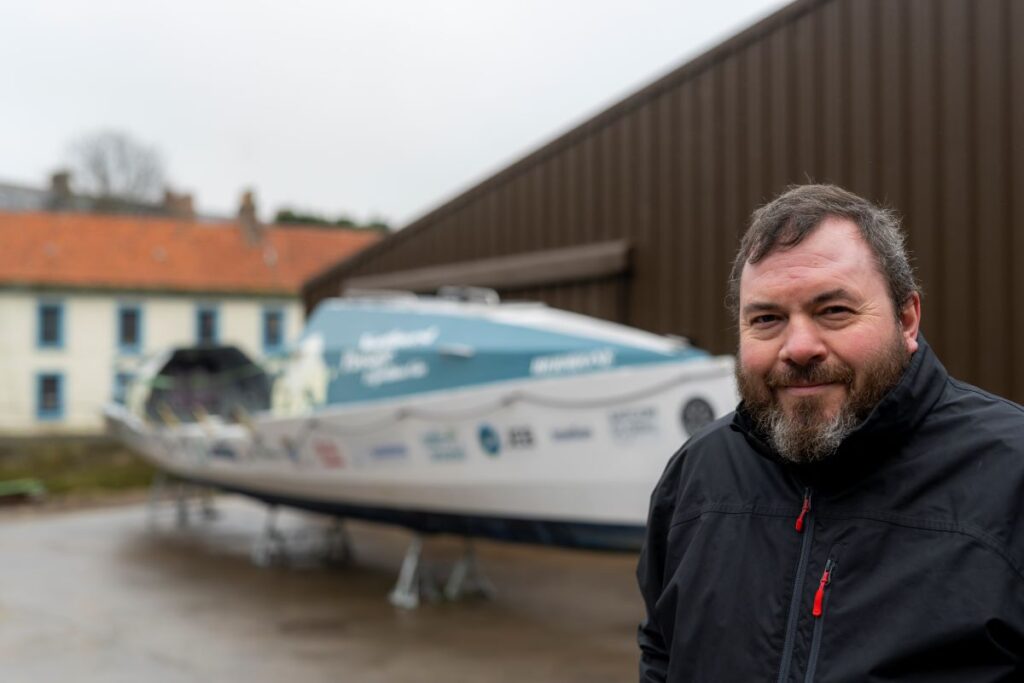Leven Brown has accomplished a lot.
A Guinness World record-holding ocean rower, in 2005 he became the first man ever to row solo and unsupported from Spain to the West Indies.
Since that first incredible feat, Leven has rowed thousands of nautical miles, including the Trade Winds route several times, the North Atlantic from New York to the Scilly Isles and across the Indian Ocean from Western Australia to the Seychelles.
But his latest challenge, an attempt to row the North West Passage, was easily the most dangerous yet for the Scottish Borders adventurer.
Earlier this year Leven and his crew left Eyemouth in their boat Hermione, named after Leven’s late mother, and headed to Pond Inlet in Canada to begin their journey. With no commercial lines able to take the team and their craft to the starting point, they used a hybrid engine fitted to the rowing boat to motor the 4,500 miles.
The Arctic’s North West Passage is steeped in mystery and tragedy. The beguiling sea route, which connects Europe to Asia, has claimed the lives of many of those brave enough to have attempted it.
Weaving amongst the hostile Canadian arctic archipelagos over the top of the world, it has captured the imagination of Europe’s foremost explorers – Christopher Columbus, Roald Amundsen and the doomed Sir John Franklin.
But for Leven and his crew, their exhibition hit the rocks in September when an unforecast storm on the point of Cape Hope in the North West passage brought huge gusts of winds which destroyed the boat’s anchor system.

‘The weather up there changes so quickly,’ Leven said. ‘In 20 minutes you can go from calm to gusts of wind blowing 30 knots, it’s vicious.
‘We decided to make a dash for a couple of islands that were on the chart. But because so much of the coastline on the North West Passage is unsurveyed we quickly realised the ones we were going to sheltered behind didn’t in fact exist.
‘We couldn’t find anywhere to shelter as the weather got worse. The wind was increasing, the gusts were incredibly vicious.
‘There is almost nowhere to shelter along the coastline, so we always knew we would be in a bit of a pickle if we had to face any bad weather.
‘We had a line with three anchors out and we got hit by a big breaking wave which broke one of the flukes on the anchor, which I have never even heard of happening before.
‘It bent out a three tonne carabina. We didn’t realise the anchor was broken straight away, we just thought we were dragging it across lots of jaggy rocks.’
The crew began rowing and with a bit of luck managed to avoid most of the rocks. But it quickly became clear they were going to collide with the shore.

‘We had a back up, emergency anchor which kind of controlled our beach landing,’ Leven said.
‘Because of the strong winds, the boat jackknifed and started bouncing down the beach, getting smashed all the way.
‘We hit a really bad rock and it put a three and a half foot hole in the bottom of the boat, but more critically it had smashed into two of the waterproof bulkheads which meant we could now see daylight down through the bottom of the boat.
‘The hole was too deep to repair in a conventional sense. We carry fibreglass repair kits but they are really for small puncture wounds. We don’t carry anything that would deal with a huge hole that size.’
When the crew tried to re-float the boat water was pouring in. A hole that size normally marks the end of an expedition.
But being on the North West Passage is not like getting rescued in the English channel, Leven said, and he knew it could take days for someone to rescue them.
‘We hatched a plan to patch it up best we could using some drybags, some rubber tape and some screws,’ he said.
‘We dug some of the beach away with our oars to make a channel back to the sea because the boat couldn’t refloat by itself.
‘It was a rudimentary repair so it was leaking all the time, so we had to bail out constantly.
‘We had a little electric engine that was going to be used in case of emergency so we popped that on the back and thought we would make our way to the nearest village.
‘But just after a few hours the engine failed and we knew we would just have to row.’
The crew began an intense regime of rowing and bailing out over the next ten days to keep on top of the water coming in.

And slowly but surely they managed to eke out the 250 miles to get round to their destination at Paulatuk.
‘We had our hearts in our mouths a lot of the time because the coastline up there is so exposed,’ Leven said.
‘But it was great teamwork and a really good example of how people work together to get difficult things done.’
Technically the crew didn’t row the whole North West Passage, the boundaries were just 100 miles ahead of them, but with the hole in the boat they couldn’t make it.
But what they did achieve was a miraculous feat of survival, becoming the first rowing boat to go from East to West.
And after a few months of reflection what does Leven think about the incredible adventure?
‘It was easily the most challenging expedition I have been on in my life, and the most dangerous,’ he said.
‘All that being said, the arctic is a ruggedly beautifully unique environment and I can see why people would want to go back for more.
‘It was an amazing journey and I think one of the best things we were able to do was to get the boat home.’
TAGS


